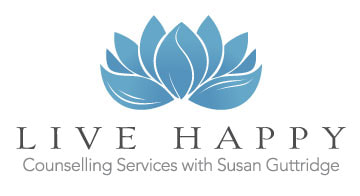|
This article was originally posted on October 29, 2010, to Happy Parents = Happy Kids (focusedonparenting.wordpress.com) by Susan Guttridge
However, if you are in the habit of caring for your children, your partner, pets, etc. at the complete expense of caring for yourself, you will come to identify yourself solely by this caregiving role. Doing so puts you at risk of losing sight of your own individuality. Making yourself a priority, treating yourself kindly, nurturing yourself as well as the others in your life, is crucial to maintaining balance. It can also sustain you during stressful times, buffer against feelings of anxiety, and aid in the development of self-love. Everyone has time to care for themselves throughout the day: we just tend to use that time for other things. And the truth is, it doesn’t have to take a great deal of time. For example, your plan to care for yourself may involve choosing to speak kindly to yourself (to be less critical with your self-talk). This process could involve enhancing self-awareness, which would enable you to start catching yourself when self-talk becomes critical, and then replace it with something kinder. Such a process wouldn’t necessarily take time out of your day, just a shift in your thinking process! Read and work through the steps outlined below, and make a plan to build some self-care into your week. Part 1: Identify
In your journal, or on a piece of paper if you do not use a journal, write the title “What does it mean to love myself?”. Then, divide the page into 2 columns, with “Behaviour” on one side, and “Thoughts/Beliefs” on the other side. Take a moment to think about what it means to truly care for yourself. Once you have an idea of what this looks like for you, put your ideas on the paper, in the appropriate columns. For example, on the behaviour side, you might include things like: eating right, allowing yourself enough sleep, calling friends, reaching out for help when necessary, relaxing regularly (perhaps with a bath, meditation, yoga, reading, etc.), exercising, going for walks, gardening, limiting stress in your life, having strong boundaries with difficult people in your life, and so forth. Examples of thoughts/beliefs are: using positive affirmations, saying kind things to yourself such as “I can do this”, “I can learn to do that” (rather than “I’m such an idiot”), “I can handle my anger”, “I’m currently struggling with this because I am new at it” (rather than “I can’t do this”), “I have the power to take charge of my life”. Part 2: Plan Now that you have identified the ways in which you can care for yourself, take steps to incorporate loving yourself into your daily life. Review your list, and select the items on it that you identify the most with – the ones that really stand out for you. With these you will create a plan to incorporate them into your life: write down all the details necessary to carry out your plan during the following week. For example, if you want to eat better, you could review a recipe book, make a menu plan for the following days, and a grocery list of necessary food items. Or, if you commit to going for walks, but it is wintertime and you don’t own a pair of winter books, make a plan to purchase winter boots. When you are creating your plan, think of anything that could get in the way of carrying out your plan, and then deal with it. Identifying the obstacles ahead of time is important and will enable you to better change your routine in your desired ways. Start small. Be realistic. Once your plan has been created – start living it! Reference: Yes You Can! 16 Steps for Discovery & Empowerment, by Charlotte Kasl (1995)
0 Comments
Your comment will be posted after it is approved.
Leave a Reply. |
AuthorSusan Guttridge is a trauma-informed Master level Counsellor with the clinical designation of Canadian Certified Counsellor (CCPA). She has 20+ years experience providing individual and group therapy. Archives
January 2024
Categories
All
|


 RSS Feed
RSS Feed